Onigiri (お握り), also called omusubi (お結び) or nigirimeshi (握り飯), are Japanese rice balls made with white rice formed into a triangular shape and wrapped with nori (seaweed)! It's a popular Japanese snack or lunch flavored with various fillings and seasonings such as tuna mayo, umeboshi (pickled plum), salted salmon, and furikake.
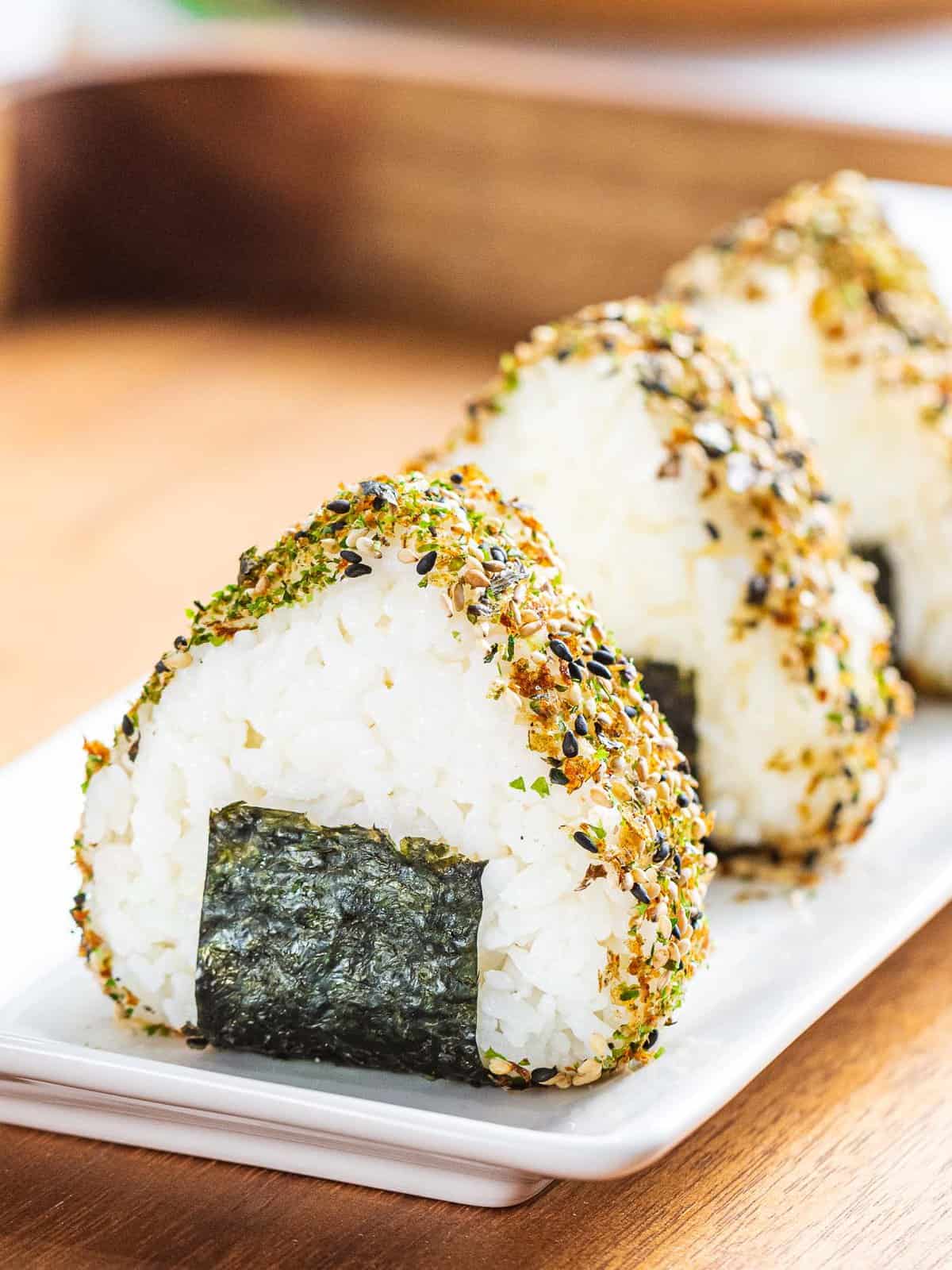
Onigiri (お握り) or Japanese rice balls are a convenient snack or lunch that's quick and easy to make! It requires just three ingredients and is ready in only five minutes! All you need is short or medium-grain rice, furikake topping, and nori (seaweed) for wrapping.
These Japanese rice balls are a great way to use up leftover rice and other sides you have sitting in the fridge. They're also fantastic for meal prep as you can have all your fillings laid out and make onigiri in just minutes!
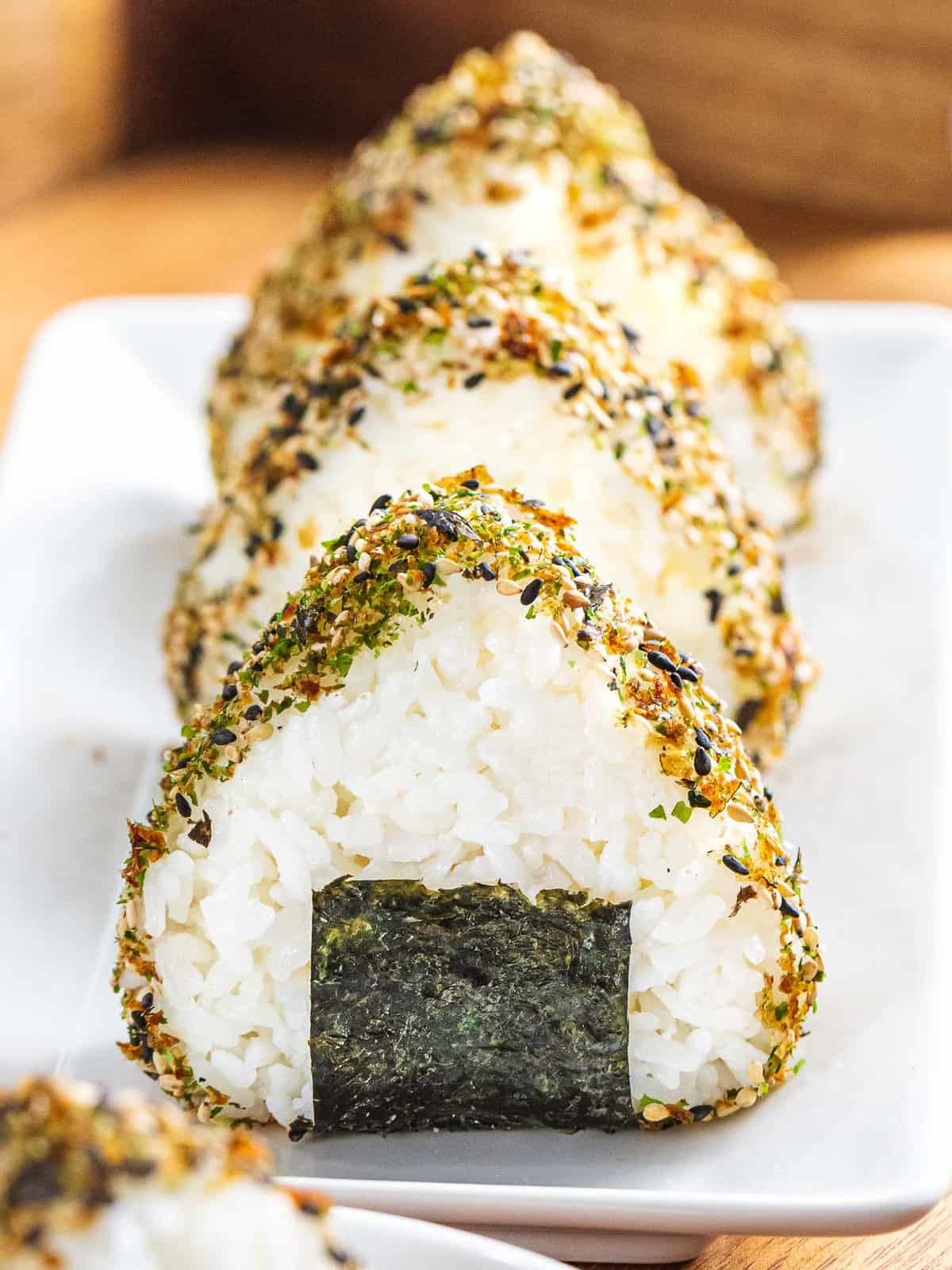
Ingredients
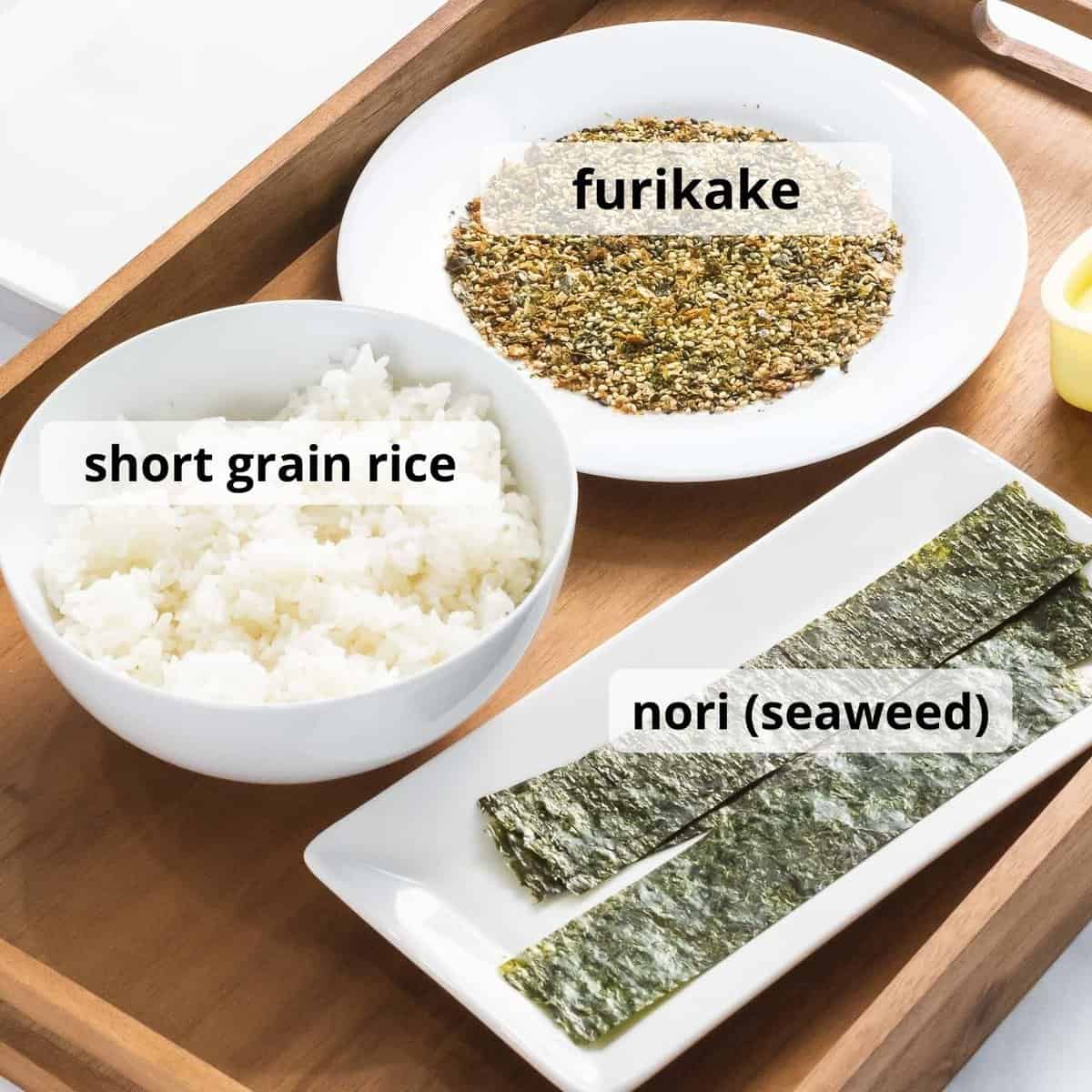
How to Make Onigiri - Japanese Rice Balls
- Shape by hand - Wet your hands with water and rub them together with a pinch of salt. The salt adds more flavor and acts as a preservative while the water helps avoid the rice sticking to your hands (using gloves helps too). Take about ½ cup of warm rice in your hands and firmly but gently mold the rice into a triangular shape.
- Shape with a mold - Spray a bit of water and add a pinch of salt to your onigiri mold. Add the appropriate amount of rice to fill the mold and press down to create a triangular shape.
- Add filling (Optional): If adding the filling, create an indentation into the rice before shaping and add about 1 tablespoon. Enclose the filling with rice and shape with your hands or with a mold.
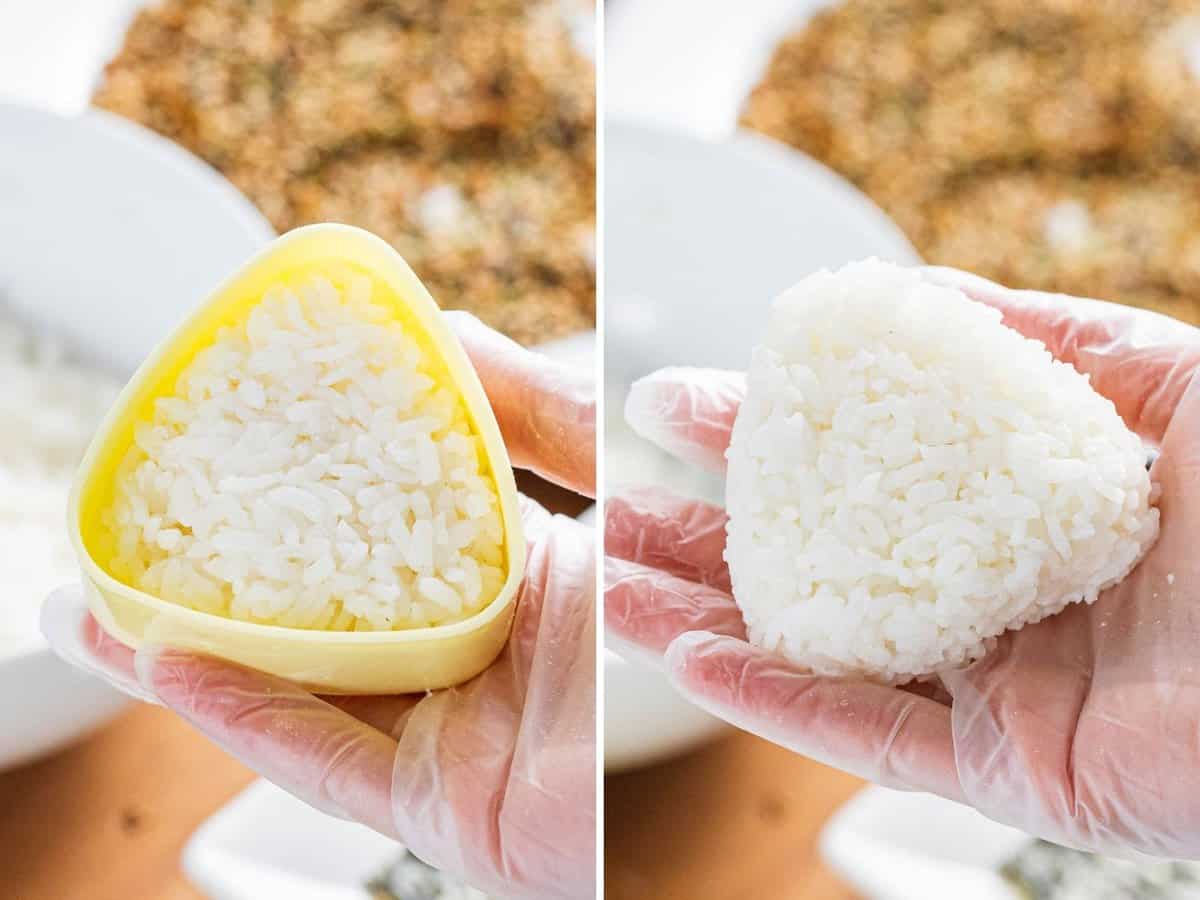
- Furikake topping: Press the onigiri into the furikake topping to cover the edges or sprinkle on top.
- Nori wrapper: Wrap the onigiri with the strip of nori seaweed if serving immediately. If making ahead, wait until right before serving to add the nori as it can get soggy from the moisture from the rice. A crisp sheet of nori is essential for good onigiri.
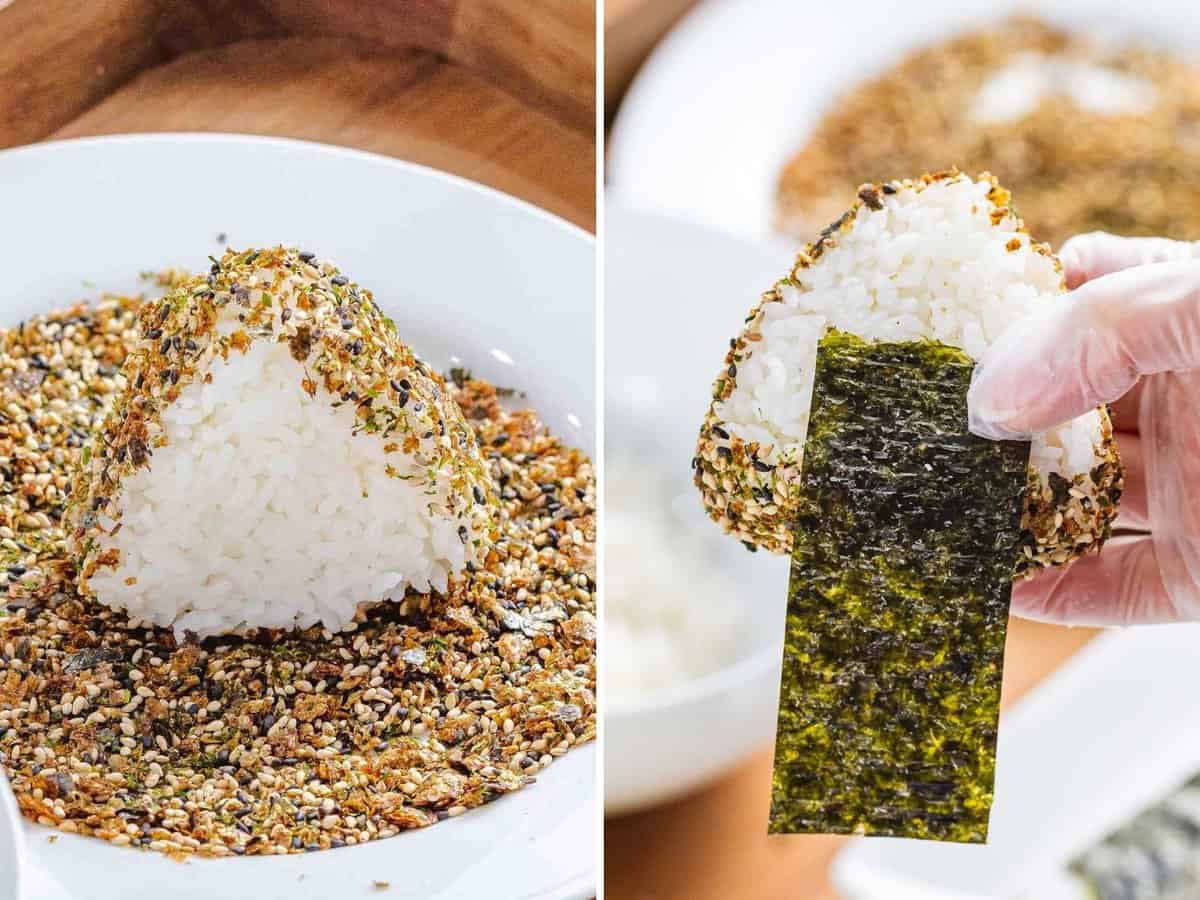
Serve immediately while the rice is still warm or you can refrigerate them and serve later. To reheat, wrap the onigiri in a damp paper towel and microwave for 20 seconds at a time.
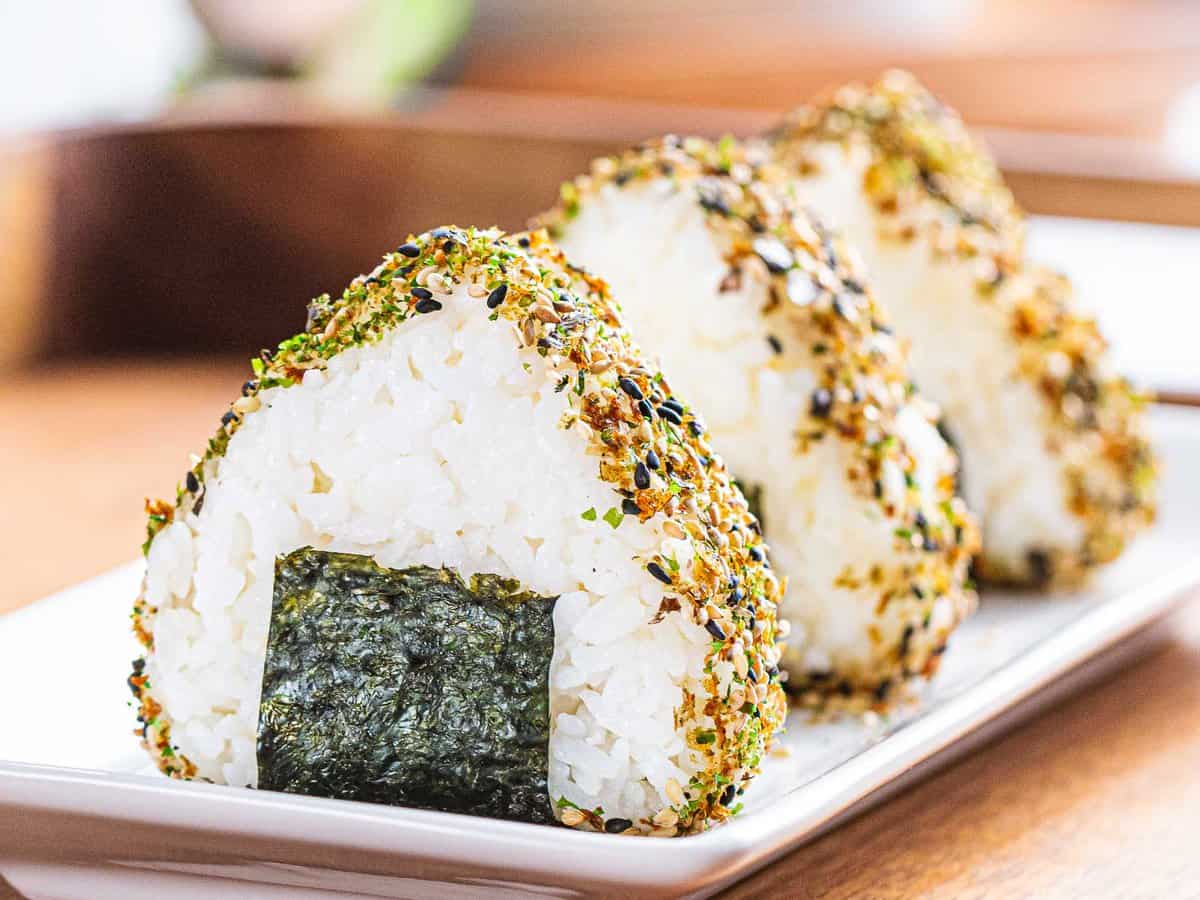
Onigiri Fillings
- Salted salmon (shiozake)
- Umeboshi (pickled plum)
- Chicken teriyaki or karaage
- Fish roe - mentaiko or tarako
- Okaka (bonito flakes)
- Kombu - seasoned kelp
- Tuna mayo - Tuna mixed with mayo, salt, and pepper
- Kani (crab or imitation crab stick)
- Unagi (eel)
- Egg - hard-boiled and chopped
- Vegetables - spinach or mushrooms
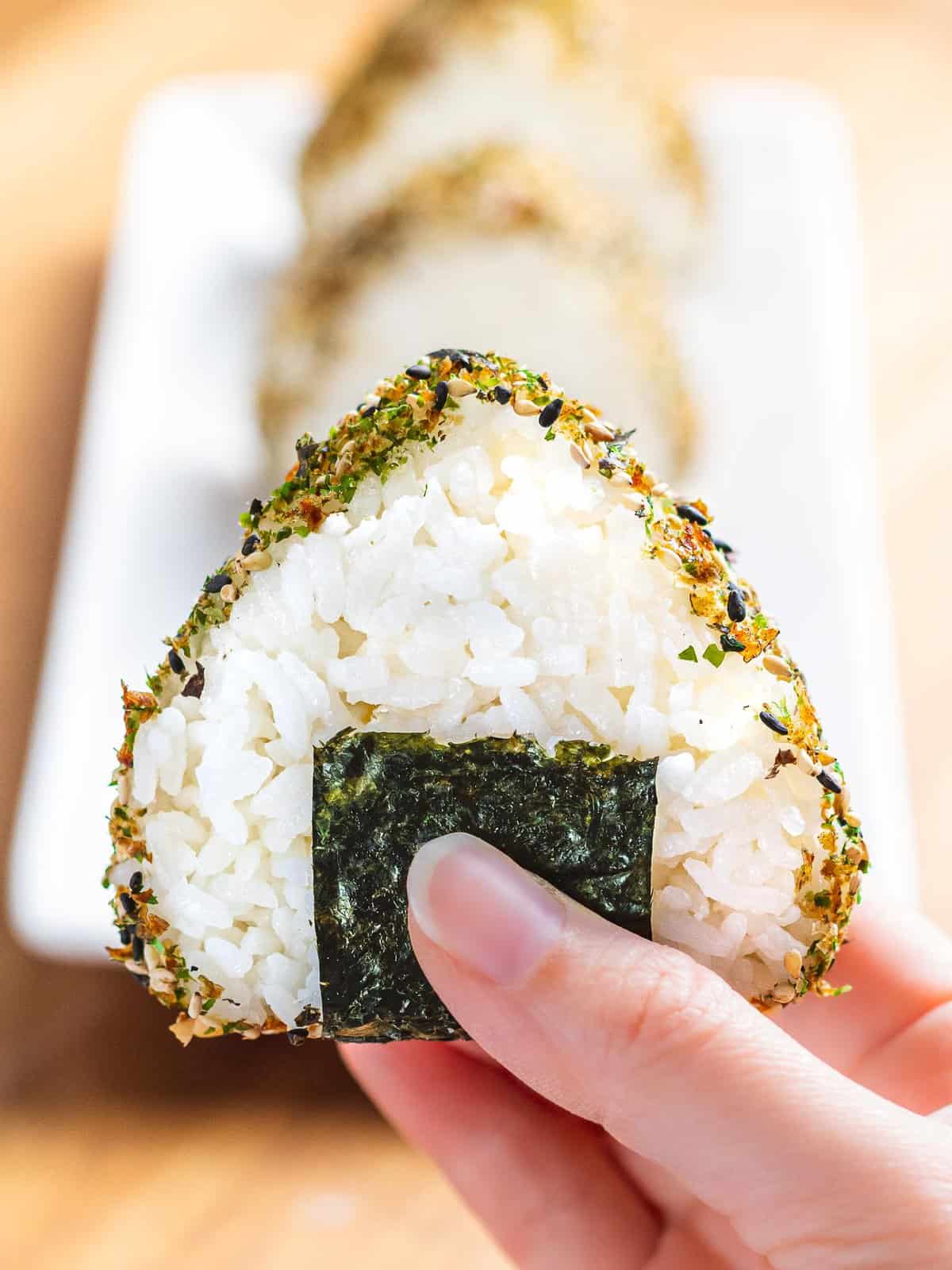
Onigiri Shapes and Molds
Traditionally onigiri is shaped into a triangle but you can form them into rectangles, balls, or even cute animal shapes using nori and furikake as decoration.
Cute onigiri molds in the shape of animals are used for children's bento boxes and can be found on Amazon or Daiso.
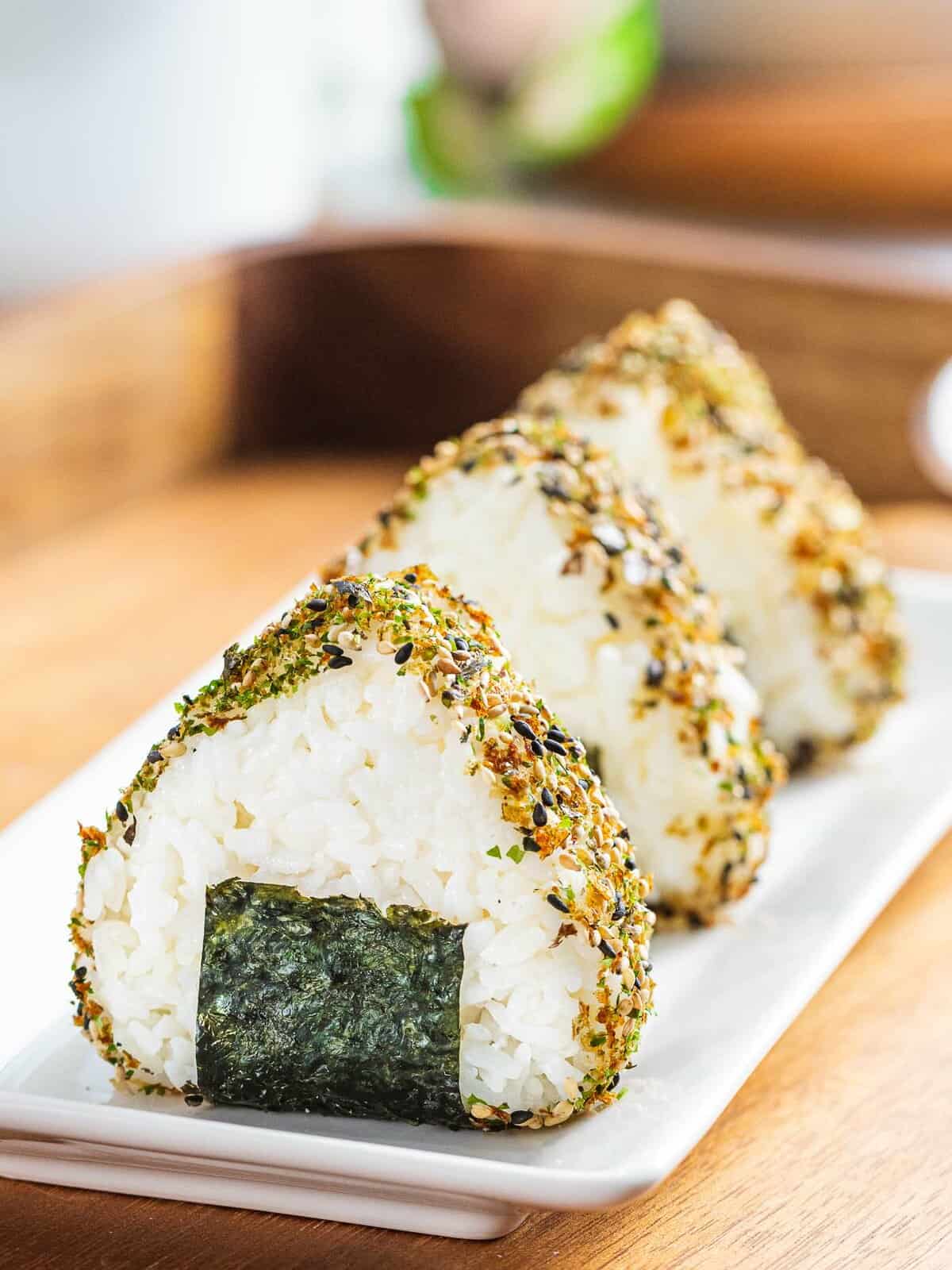
Variations
- Healthy - Use sticky brown rice and add healthy fillings such as lean protein and vegetables.
- Vegetarian - Opt for vegetarian furikake as some varieties contain seafood. Use vegetable fillings such as umeboshi, kombu, spinach, and mushrooms.
- Plain - Onigiri in its simplest form is made with just plain rice with no filling but still uses a nori wrapper.
- Hot or cold - Onigiri can be eaten hot or cold but I prefer it a little warm so the rice is still soft and tender.
- Wrapper - Traditionally a nori wrapper is used but you can try sushi soy paper or a shiso leaf.
- Onigiri Chazuke - Add onigiri to a bowl and pour warm dashi or green tea over it for a comforting meal.
More recipes:
Recipe
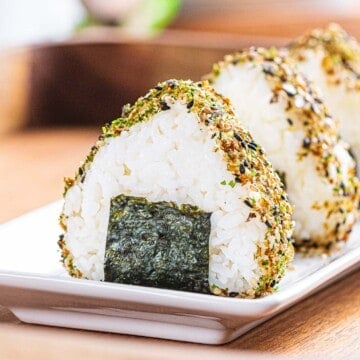
Easy Onigiri お握り (Japanese Rice Balls)
Equipment
☑ Ingredients
- 2 cups cooked rice - short or medium-grain; warm
- 2 sheets nori sheets - cut into 2 - 3 inch strips
- ¼ cup furikake
- sea salt
Instructions
Shape Rice and Add Filling
- Shape by hand: Wet your hand with water and rub them together with a pinch of salt. Take about ⅓ to ½ cup of warm rice in your hands. If adding the filling, create an indentation and add about 1 tablespoon. Using both hands, firmly press the rice into a triangular shape encasing the filling. Shape with mold: Spray a bit of water inside the onigiri mold and add a pinch of salt. Fill the mold with the appropriate amount of rice and firmly press to create your shape. If adding the filling, reserve half the rice to place on top of the filling and then press down firmly on the mold.2 cups cooked rice, sea salt
Season with Furikake
- Furikake seasoning: Press the onigiri into the furikake or sprinkle the furikake on top.¼ cup furikake
Nori Wrapper
- Wrap with nori: Wrap the onigiri with a strip of nori seaweed right before serving to keep it crispy. See below for notes on making ahead and storage. Enjoy!2 sheets nori sheets
✎ Recipe Notes
Tips:
- Short or medium-grain rice is required as its sticky nature helps shape the onigiri without falling apart. Long-grain rice such as Jasmine rice isn't sticky enough.
- Using warm rice helps the onigiri hold its shape as cold rice isn't very sticky.
- Wet your hands with water and apply a pinch of salt. The salt adds more flavor and acts as a preservative while the water helps avoid the rice sticking to your hands (using gloves helps too).
- Use fillings that are low in moisture to prevent the rice from getting soggy.
- Add the nori wrapper right before serving to prevent it from getting soggy from the rice. A crisp sheet of nori is essential for a good onigiri.
Fillings:
- Salted salmon (shiozake)
- Umeboshi (pickled plum)
- Chicken teriyaki or karaage
- Fish roe - mentaiko or tarako
- Okaka (bonito flakes)
- Kombu - seasoned kelp
- Tuna mayo - Tuna mixed with mayo, salt, and pepper
- Kani (crab or imitation crab stick)
- Unagi (eel)
- Egg - hard-boiled and chopped
- Vegetables - spinach or mushrooms
Nutrition
*Nutritional information is an estimate, calculated using online tools.
Onigiri can fall apart for a few reasons. First, using the wrong type of rice can cause it to fall apart because it's not sticky enough. Use short or medium-grain rice and avoid long-grain rice. The second reason can be that it was not firmly pressed into its shape. Be sure to use firm pressure so there are no gaps in the rice. Third, using high-moisture fillings can cause the rice to separate and fall apart. Be sure to use low-moisture fillings and don't overfill.






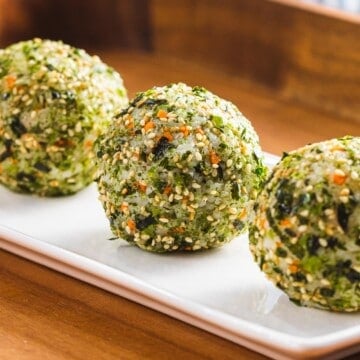
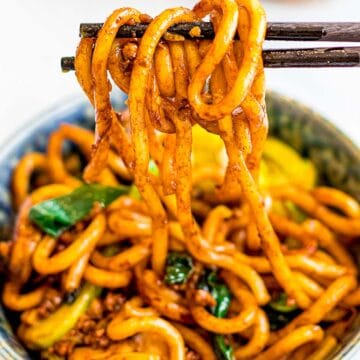
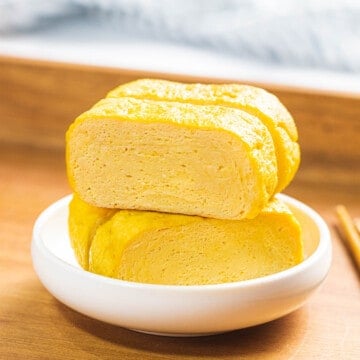
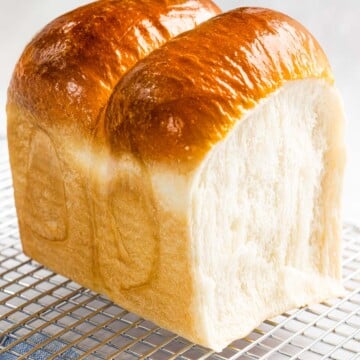
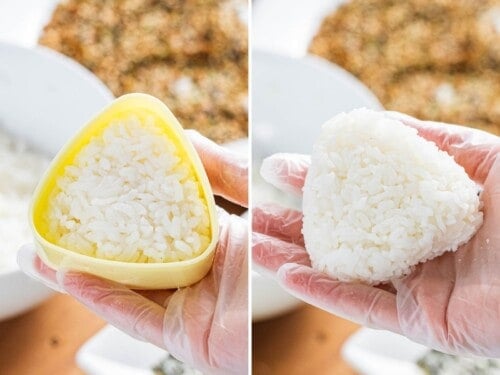

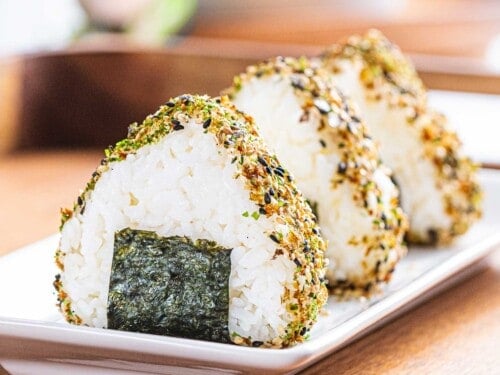
Leave a Comment